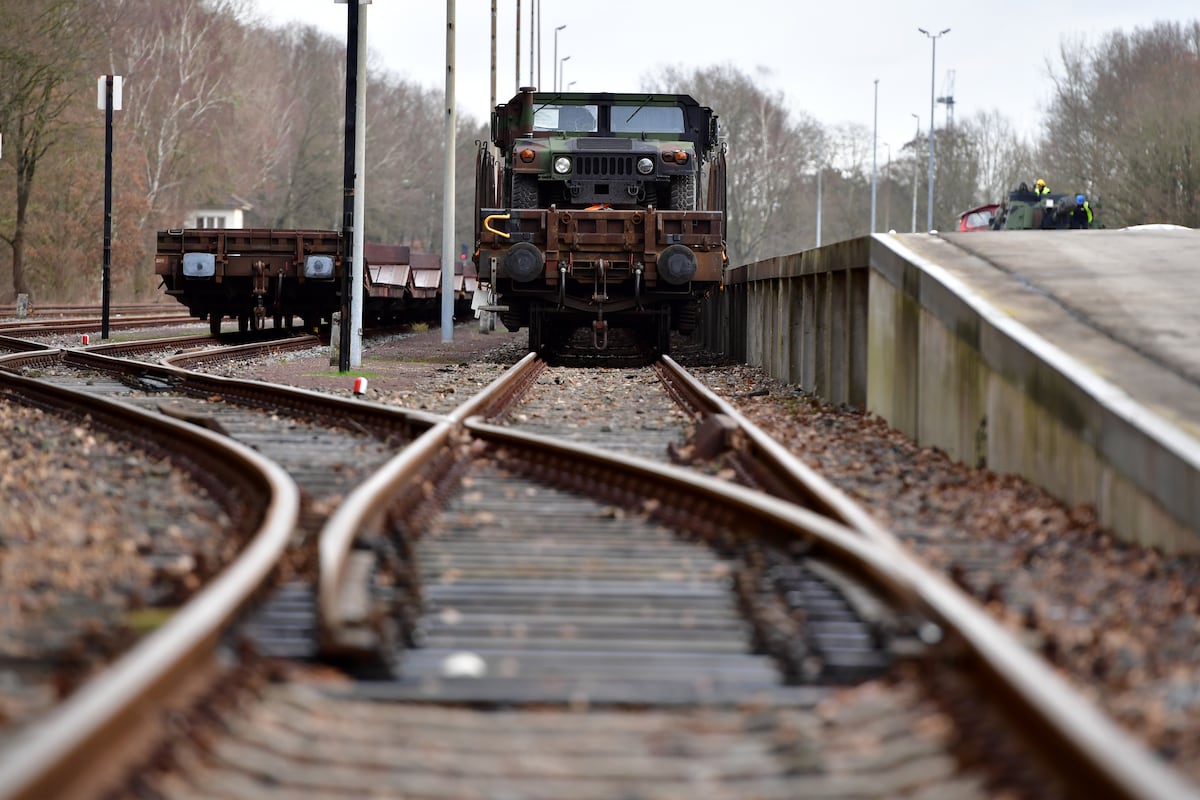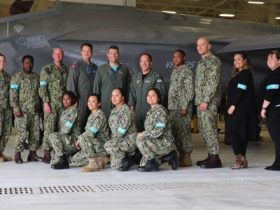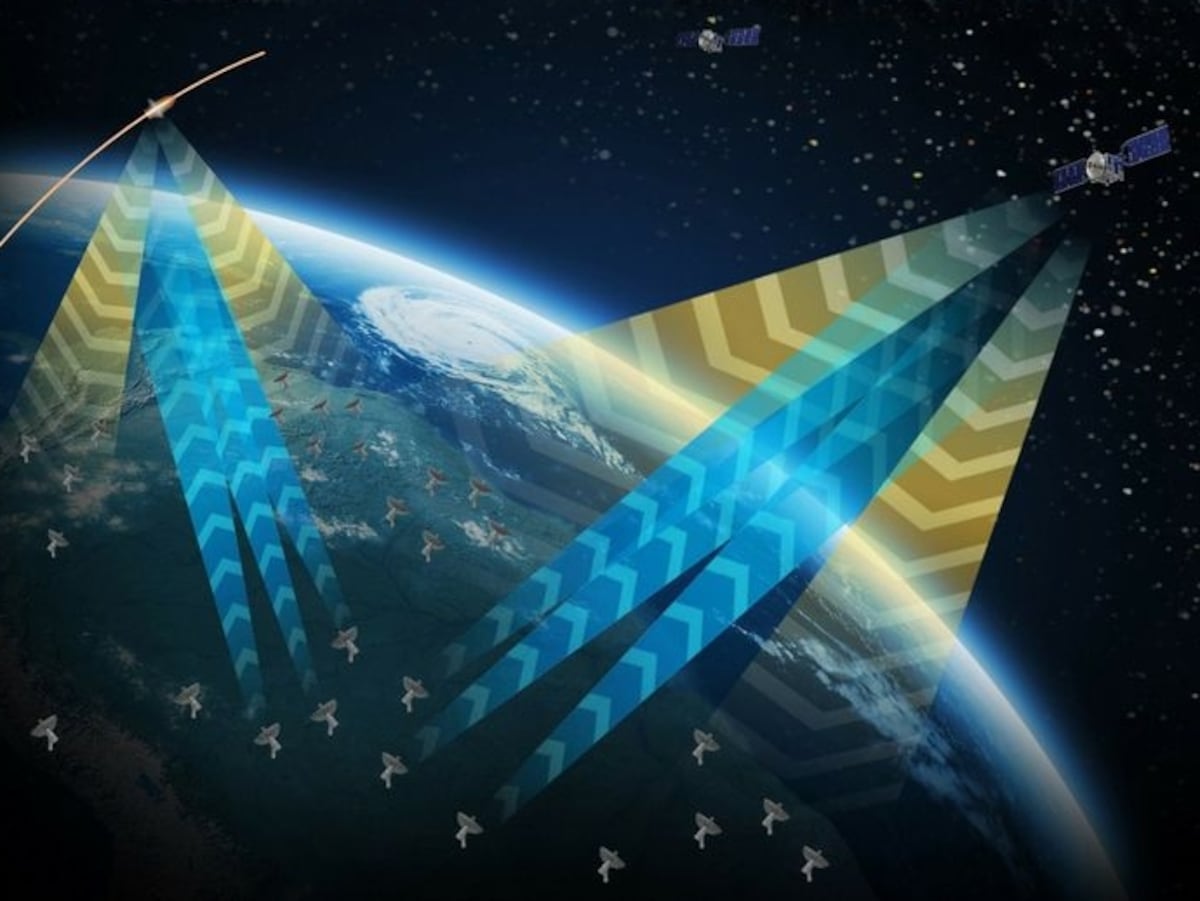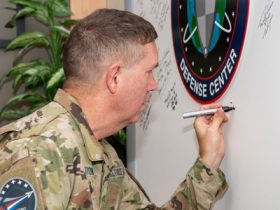PARIS — The Netherlands Ministry of Defence is investing in steel to defend NATO’s eastern flank. That means adding tanks and armored vehicles, but also expanding a fleet of railway wagons that allows Dutch military planners to rush armor and supplies across Europe.
The ministry’s Joint Support Command received 75 new wagons in December and January, a 20% increase of its fleet. That makes the Dutch less reliant on commercial providers, and shortens reaction times should troops need to deploy in anger, Defence Movement and Transport Organisation (DVVO) Commander Col. Merlijn Heiligers told Defense News.
As NATO has stepped up exercises and deployments in response to Russia’s invasion of Ukraine, there’s renewed emphasis on the role of rail to rapidly move combat forces in support of alliance members. Yet European armies looking to rent wagons face scarcity on rising demand and the legacy of falling spending on military rail after the Cold War – something the Dutch are addressing with their growing fleet of rolling stock.
“Of course we see a changing geopolitical situation in Europe, and then we want to be less dependent on the market, and partly provide those capacities ourselves,” Heiligers said.
“Deployment in anger is not something that is planned, that always comes up suddenly, so you need some kind of minimum own capacity to be able to start taking action.”
The Netherlands has a “substantial” position in military rail transport in Europe and is one of the few countries to own a fleet of wagons, together with France and Germany. Several smaller EU countries are now also looking at buying wagons, according to the Dutch MoD.
The new wagons from manufacturer Greenbrier Europe are specialized 60-ft container transporters, a unique capability among European militaries, according to the ministry. The Dutch armed forces are also alone in Europe in having their own low-loader wagons for wheeled vehicles.
The new rolling stock was bought specifically to move large amounts of containerized supplies, including ammunition and fuel. Transporting military goods by container has become the norm within NATO, and it’s an area where DVVO no longer wants to depend on the private market, according to Heiligers.
RELATED
The DVVO boss said containerization has been one of the big logistics trends during his 32 years in the Dutch armed forces. That reflects developments in the commercial freight sector, with the volume of container traffic handled in ports around the world increased 3.7-fold between 2000 and 2022, according to World Bank statistics.
“It’s really just become the norm,” Heiligers said. “Whatever we can transport in containers, we really make maximum use of that.”
The military transport organization is investing in fuel containers that can be loaded on trains, trucks or vessels, providing greater flexibility than tanker wagons limited to the rail network.

DVVO now owns 448 freight wagons, including 125 flatbed wagons with a lowered floor used for wheeled-vehicle transport acquired since 2022. The Dutch military also owns a little over 200 flatbed wagons that can carry heavy armor including Leopard 2 tanks, Panzerhaubitze self-propelled howitzers or CV90 armored combat vehicles.
Only a few companies in Europe rent out wagons for military vehicle transport, according to Heiligers. Germany’s DB Cargo is the main player, with Switzerland’s Transwaggon another logistics company offering wagons to move heavy armor. Some militaries in Eastern Europe have access to vehicles from their former state railway companies, according to the MoD.
To put the Dutch fleet in perspective, DB Cargo says it owns, leases or rents 83,000 freight wagons, while Transwaggon says its fleet consists of 13,500 wagons, of which 1,700 are flat wagons.
“There is still capacity, but we deliberately chose to invest ourselves, because we seeing that there’s going to be insufficient capacity,” Heiligers said. “What you see is indeed scarce supply.”
Similar to its efforts to guarantee rail capacity in a tight market for wagons, DVVO signed a 10-year lease on a roll-on-roll-off vessel in 2022 to address difficulties securing strategic sea lift, with a lease on a second RoRo vessel signed in April last year.
Strategy decides where action is to be taken, but logistics gets the troops there and in place, military theorist Antoine-Henri Jomini wrote in 1837.
NATO is asking countries to ensure short response times and faster ability to reach deployment areas, and rail transport capacity is part of the Dutch commitment, with speed of deployment and independence from private operators being key, Heiligers said.
With wagons parked at ‘t Harde army base in the central Netherlands, a train can be loaded and be off within a day, according to the DVVO commander. Relying on a commercial operator such as DB Cargo requires having a contract in place, and pulling available wagons from all over Europe before assembling a train, a process which Heiligers says could take multiple days.
“That’s why we want that independence. Of course you can make all kinds of agreements with those companies about that, but you just want that certainty.”
Having wagons and a shunting locomotive at ‘t Harde additionally allows for a “significant reduction” in CO2 emissions, by avoiding the environmental impact of driving empty stock across the continent to the Netherlands, Heiligers said.
While road is used more often for Army transports, the tonnages shipped by rail and sea are comparable, according to Heiligers. Rail is typically favored over road for large volumes and weights across longer distances, and as the quantities of equipment that need to be moved increase, so does the importance of rail, he said.
According to U.S. Army officials and doctrine, rail is the most cost-effective and speedy way to move large amounts of material such as tanks and ammo over long distances. Deployed U.S. Army units move about two-thirds of their equipment to a shipping port by rail, according to a 2021 report by the U.S. Government Accountability Office.
“The moment I have to start transporting an armored-infantry battalion with CV90s, that’s obviously a huge burden on the civilian network,” Heiligers said. “I might need 50 or 60 trucks, whereas I might be able to do it with one or two trains. In that sense, the societal burden from railroads is lower.”
Using rail also avoids congested roads, requires less personnel, and is a more sustainable option, the commander said.
Still, military transport remain a niche use of the Dutch railway network, and DVVO’s more than 100 trains in all of 2023 compare with an average of more than 1,500 commercial freight trains chugging across the Netherlands every week, according to the country’s statistics office.
The Netherlands, which handles more maritime freight than any other European economy, likes to call itself as the gateway to Europe. The country fulfills that role for military movement, with 80% to 90% of military train traffic in the Netherlands either going abroad or coming back from a cross-border trip, Heiligers said.
Rotterdam was one of the major ports for the U.S. Army during the Cold War, and U.S. combat brigades still regularly use Dutch ports for rotations in Europe. While the Dutch armed forces are the main user of the rail fleet, DVVO together with DB Cargo handles “a lot of transit” of American equipment for troop rotations of units in Poland.
Dutch wagons also bring large amounts of military equipment to Eastern Europe in support of Ukraine, according to Heiligers.
Railway capacity is made available to allies when not in use by DVVO, and the Netherlands also swaps capabilities with a partner country such as Belgium, which is more invested in air transport.
“Things are getting tense and you want to be able to react and be less dependent on the market,” Heiligers said. “That’s not to say the market is not doing well, but you want to be able to make that first move yourself. You want to have freedom of action.”
Rudy Ruitenberg is a Europe correspondent for Defense News. He started his career at Bloomberg News and has experience reporting on technology, commodity markets and politics.
Read the full article here








Leave a Reply